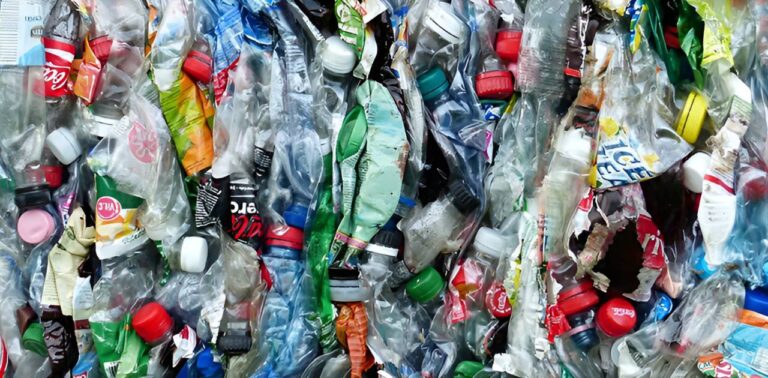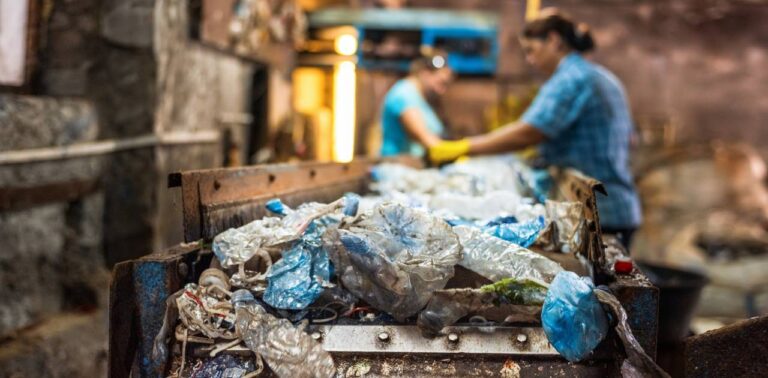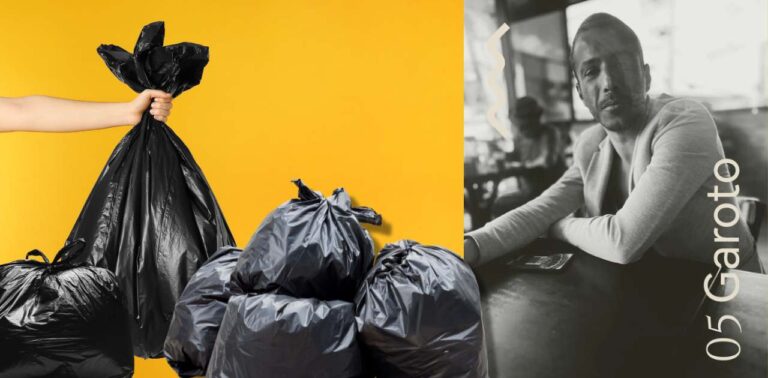Advertisements
Metal packaging, found on products such as cookies, snacks and many other everyday items, is a type of packaging widely used in the food industry and other sectors. The shiny appearance and durability of this packaging have their advantages, but they also raise important questions about the impact on the environment. One of the most common questions is: is metal packaging recyclable? The answer is yes, it is 100% recyclable, but that does not mean that it is recycled as often.

The Importance of Recycling Metal Packaging
According to the Packaging Technology Center and Food Packaging Technology Institute (Cetea-Ital), metalized packaging is completely recyclable. However, the reality is that the recycling rate for this packaging is still low, and this is mainly due to a lack of information among both consumers and waste managers.
Metalized packaging should be collected together with plastics, as the aluminum layer present in them is extremely thin, which does not interfere with their recyclability. Despite this, many of these packages end up in landfills or are incinerated, contributing to environmental pollution and the loss of resources that could be reused. The recyclable symbol, which should be present on these packages, is often ignored, further aggravating the problem.
Barriers to Recycling
Although metalized packaging is technically recyclable, its effective recycling faces several obstacles. In the post-industrial process, where the leftovers and trimmings of metalized films have not yet reached the market, recycling occurs on a larger scale. However, in the post-consumer scenario, selective collection of these packages is extremely limited.
Eloisa Garcia, Plastic Packaging and Environment Manager at Cetea-Ital, points out that the lack of efficient selective collection is one of the main reasons for the low recycling rate of metalized packaging in Brazil. In addition, the lack of interest from waste picker cooperatives in collecting these packages contributes to the bleak scenario. Metalized packaging is often not seen as a material with commercial value, which discourages collection and proper recycling.
The Role of Cooperatives and Reverse Logistics
Waste picker cooperatives play a crucial role in the recycling of metal packaging. However, for this packaging to be recovered on a larger scale, there needs to be a considerable volume of waste available for collection. The lack of a generous supply of metal packaging makes the recycling process even more challenging, as reverse logistics needs to be efficient and economically viable for all parties involved.
Cooperatives often fail to collect enough metal packaging to make recycling profitable. Without an economic incentive or an effective reverse logistics system, this packaging ends up being disposed of inappropriately, harming the environment.
Education and Awareness as Solutions
The low recycling rate of metalized packaging can be attributed, in large part, to a lack of awareness about the recycling potential of these materials. Educational campaigns aimed at the general population and recyclable material collectors are essential to change this scenario.
Consumers need to be informed about the recyclability of metal packaging and encouraged to dispose of it correctly. This can be done through environmental education programs that explain the importance of recycling for the environment and the circular economy. In addition, waste managers must be trained to correctly identify and separate metal packaging, ensuring that it is recycled rather than discarded.
Innovations and the Future of Recycling
With the advancement of technology and growing concern for the environment, new solutions are emerging to facilitate the recycling of metalized packaging. Companies and startups are developing more efficient and sustainable processes to recycle these materials, transforming them into new products or reusing them in industrial processes.
Additionally, increased pressure for stricter environmental regulations may force industries to adopt more responsible practices and invest in more efficient recycling programs. Implementing reverse logistics policies and creating financial incentives for recycling metalized packaging can also help increase the recycling rate of these materials.
Conclusion: Do Your Part
Now that you know that metal packaging is 100% recyclable, it is essential that you do your part to ensure that it is recycled properly. Separate metal packaging from other waste, check that it is identified with the recyclable symbol and take it to selective collection points. Also, share this information with friends and family so that more people become aware of the importance of recycling.
Recycling metal packaging not only helps reduce the amount of waste going to landfills, but also contributes to the circular economy, where materials are continually reused, reducing the need to extract new natural resources. Together, we can make a difference for the environment and build a more sustainable future.
Check out other interesting facts about recycling clicking here.
Learn how to make art by recycling, Click here.




Good morning.
I would like to know where I can sell the metallic snack bags? I can't find a buyer.
Thanks
Cintia, unfortunately being recyclable does not mean that it is recycled. According to Cetea, these packages should be recycled together with other BOPP packages.
Hello, everyone! I also try to find out about buying and selling recyclable materials. Since not all materials have a significant number of sales or, due to lack of information, we cannot find a way to sell them, I look for a way to reuse them, so that they do not end up in inappropriate places, in addition to reducing the volume of household waste, and consequently, the landfill.
Hello, they are recycled, but what is the process for this recycling? After separation?
Good afternoon, I am in the middle of a process where I managed to separate the plastic from the aluminum, I would like to know if the possibility of selling the transparent PVC plastic and aluminum would be viable (cost) in this type of recycling.
I believe that after this report, the government needs to be stricter with companies that package their products and apply law 12,305 National Solid Waste Policy to them and emphasize reverse logistics.
Hello
The article is a bit eye-catching, but there is a problem with the content. It does not clarify the biggest question, which is: what is the destination of the metalized material, what is the product generated after collection? I work in the packaging area and the only destination I know of is to throw it in the middle of the asphalt mass.
If you can clarify other means of processes with this waste, it would be highly relevant content!
Thanks
Guys, today we managed to get a high-resistance metallized BOPP film, a mono material, from two large companies. It has already been approved by Nestlé to be used not only in snacks but also in various products, such as coffee, soups, among others. We just need the law from the competent bodies and the education of the population. Because now in Brazil they are already manufacturing “ecological” films.
Good afternoon, thank you for the article! I am still researching an alternative to these BOPP packaging, which companies should also consider! If you have any ideas or suggestions for reading, I am available to learn more.
Hello, good morning, I have been working in this area for some time and I have always seen companies testing this material from cooperatives and nothing concrete has ever come of it. Therefore, for a product to be recyclable, it needs much more than just having the name and brand of recyclable. It needs to have an established consumer market for this raw material and added value that interests the market, which is not the case with laminated packaging. Here is the link to my YouTube channel where I talk about this.
https://youtu.be/y1GF1hQXTgM
Good morning Ricardo?
All good?
I would like your help by letting me know if you know of any NGOs or if you work with recycling medicine packaging (Blister), those metalized pill packaging.
I would like to thank you in advance for your attention.
I live in the Jaçanã area.
Gratitude,
Try contacting https://www.rcrambiental.com.br